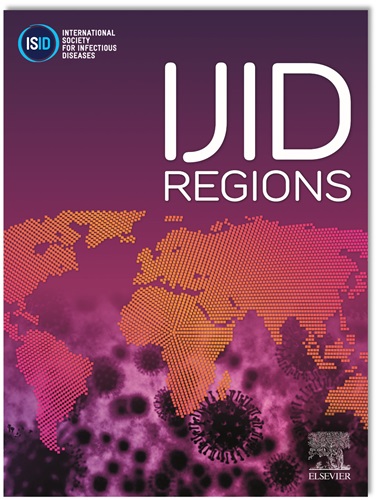Effectiveness of dolutegravir-based vs boosted darunavir-based first-line 3-drug regimens in people with HIV with advanced disease: A trial emulation
IF 4.3
2区 医学
Q1 INFECTIOUS DISEASES
引用次数: 0
Abstract
Background
No randomized comparisons exist between dolutegravir (DTG) and boosted-darunavir (DRV/b) for people initiating treatment with advanced HIV.
Methods
Antiretroviral therapy (ART)-naïve people with HIV (PWH) with CD4 < 200 cells/mm3 or AIDS who started a first-line three-drug regimen with DTG or DRV/b were included. The primary outcome was a composite endpoint of newly diagnosed AIDS, serious non-AIDS events (SNAE), death, virological failure (VF), or discontinuation of the anchor drug due to failure or toxicity. A marginal structural Cox regression model was used to estimate the effect of starting DTG vs DRV/b-based regimens.
Results
A total of 1323 advanced ART-naïve PWH were included, 895 starting DTG and 428 DRV/b. The unweighted risks of the composite endpoint by 48 months were 21.1% (95% CI: 18.1; 24.1%) for DTG vs 37.9% (95% CI: 32.7; 43.2%) for DRV/b (P < 0.001). First-line treatment with DTG showed a lower risk of experiencing the composite endpoint than DRV/b (wHR of DTG vs DRV/b 0.47, 95% CI: 0.35; 0.64, P < 0.001).
Conclusion
Under the stated assumptions, this analysis indicates that in ART-naïve PWH with advanced disease, ART initiation with DTG vs DRV/b-based regimens leads to a 50% reduction in the risk of AIDS/SNAE/death/VF/discontinuation. This observed difference is partly explained by discontinuation of the anchor drug.

基于dolutegravi与基于darunvir的一线3药方案在晚期艾滋病患者中的有效性:一项试验模拟
背景:对于开始治疗晚期HIV的患者,dolutegravir (DTG)和增效darunavir (DRV/b)之间没有随机比较。方法:ART-naïve纳入了CD4 3或AIDS的HIV感染者(PWH),并开始使用DTG或DRV/b一线三药方案。主要终点是新诊断的艾滋病、严重非艾滋病事件(SNAE)、死亡、病毒学失败(VF)或锚药因失败或毒性而停药的复合终点。使用边际结构Cox回归模型来估计起始DTG与DRV/b为基础的方案的效果。结果:共纳入1323例晚期ART-naïve PWH, 895例起始DTG, 428例DRV/b。48个月时,DTG组的未加权风险为21.1% (95% CI: 18.1;24.1%),而DRV/b组的未加权风险为37.9% (95% CI: 32.7;43.2%)。结论:在上述假设下,该分析表明,在ART-naïve晚期PWH中,与DRV/b为基础的方案相比,DTG开始抗逆转录病毒治疗可使艾滋病/SNAE/死亡/VF/停药风险降低50%。这种观察到的差异部分可以通过停止锚定药物来解释。
本文章由计算机程序翻译,如有差异,请以英文原文为准。
求助全文
约1分钟内获得全文
求助全文
来源期刊
CiteScore
18.90
自引率
2.40%
发文量
1020
审稿时长
30 days
期刊介绍:
International Journal of Infectious Diseases (IJID)
Publisher: International Society for Infectious Diseases
Publication Frequency: Monthly
Type: Peer-reviewed, Open Access
Scope:
Publishes original clinical and laboratory-based research.
Reports clinical trials, reviews, and some case reports.
Focuses on epidemiology, clinical diagnosis, treatment, and control of infectious diseases.
Emphasizes diseases common in under-resourced countries.

 求助内容:
求助内容: 应助结果提醒方式:
应助结果提醒方式:


